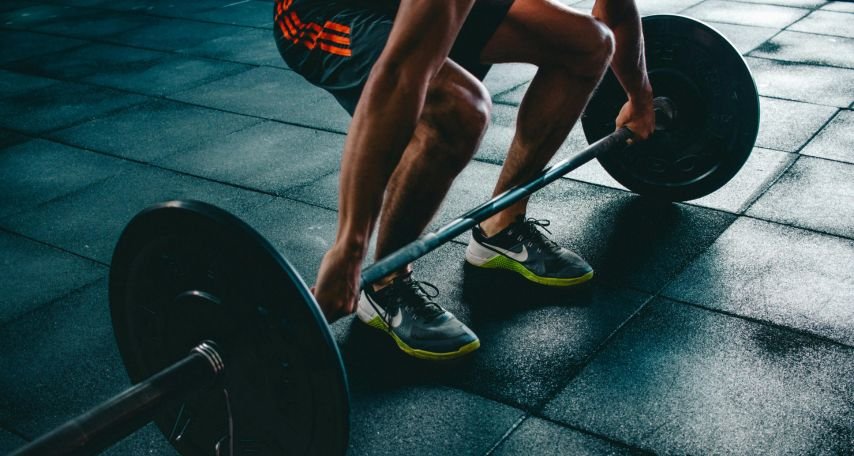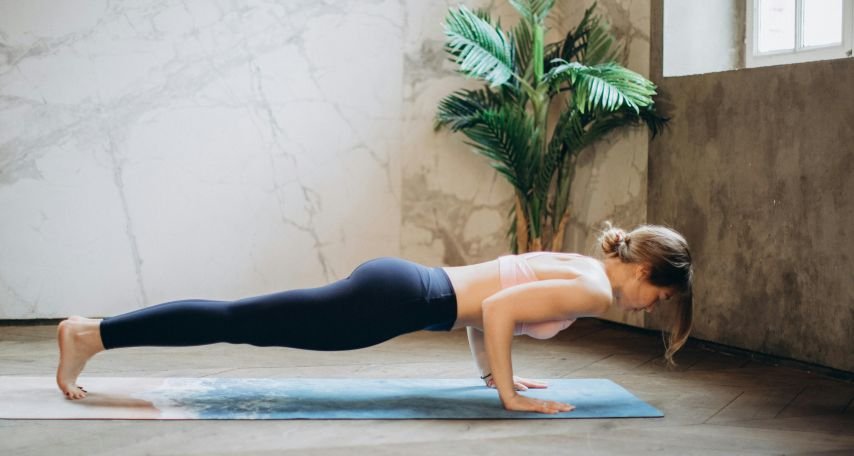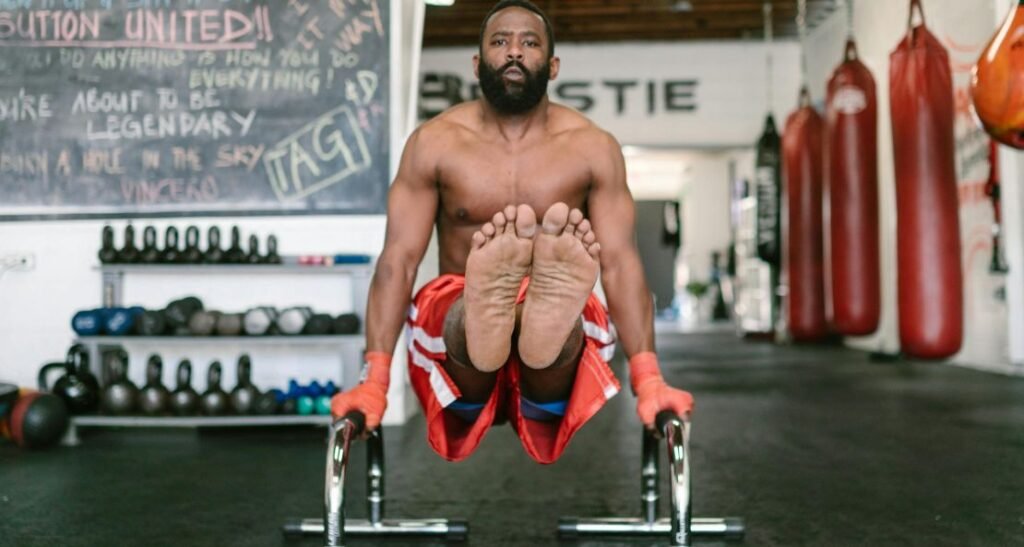Callisthenics has gained immense popularity in recent years as a versatile and effective approach to fitness.
This form of bodyweight training allows individuals to build strength, improve flexibility, and enhance overall physical performance without the need for expensive gym equipment.
As more people seek accessible ways to stay fit, callisthenics workouts have become a go-to option for beginners and experienced athletes alike.
This guide aims to provide a comprehensive overview of callisthenics for beginners.
It covers the basics of bodyweight training, introduces essential exercises, and offers guidance on creating a beginner-friendly callisthenics workout plan.
By exploring these fundamental aspects, readers will gain the knowledge and confidence to start their callisthenics journey and develop a solid foundation for long-term fitness success.
Understanding Callisthenics: Bodyweight Training Basics
Definition and History
Callisthenics is a form of strength training that uses one’s body weight as resistance to perform multi-joint, compound movements.
The term originates from the Greek words ‘kallos’ (beauty) and ‘sthenos’ (strength), embodying the concept of ‘beauty in strength’.
This ancient practice has a rich history dating back thousands of years, with evidence of its use in ancient Greece, Rome, and China.
In Ancient Greece, callisthenics was an integral part of military training, used by the armies of Alexander the Great and the Spartans.
The Romans and Chinese also employed this method to develop physical strength and maintain good health.
As time progressed, callisthenics gained popularity among the general public, particularly in the 19th century with the spread of ‘gymnasia’ and teacher-training institutions like the YMCA.
Benefits for Beginners
Callisthenics offers numerous advantages for those new to fitness:
- Accessibility: It requires no special equipment, making it affordable and convenient. Exercises can be performed anywhere with enough space to move.
- Functional Strength: Callisthenics involves compound exercises that engage multiple muscle groups simultaneously, improving overall body strength and coordination.
- Flexibility and Balance: Regular practice enhances flexibility, balance, and body awareness.
- Calorie Burning: The high amount of movement in callisthenics workouts leads to increased calorie burn, aiding in weight loss and body fat reduction.
- Muscle Definition: Consistent training results in a lean, toned physique with visibly defined muscles.
- Adaptability: Exercises are easy to modify, allowing beginners to progress at their own pace by adjusting body position or leveraging simple equipment like resistance bands or pull-up bars.
Callisthenics vs. Weight Training

While both callisthenics and weight training have their merits, they differ in several aspects:
- Equipment: Callisthenics requires minimal to no equipment, whereas weight training typically involves gym equipment or free weights.
- Muscle Engagement: Callisthenics often engages multiple muscle groups simultaneously, while weight training can isolate specific muscle groups more easily.
- Progression: Weight training offers a straightforward progression by increasing the weight lifted. Callisthenics progression requires more creativity and body awareness to modify exercises.
- Muscle Growth: Weight training may be more effective for building significant muscle mass due to the ability to increase resistance beyond body weight.
- Functional Fitness: Callisthenics tends to develop more functional strength and improve overall body coordination compared to traditional weight training.
- Calorie Burn: Callisthenics typically burns more calories due to the higher amount of movement involved, making it potentially more effective for weight loss.
Essential Callisthenics Exercises for Beginners
Callisthenics offers a versatile approach to fitness, utilising bodyweight exercises to build strength, improve flexibility, and enhance overall physical performance.
For beginners, mastering fundamental exercises is crucial to establishing a solid foundation for more advanced movements.
This section introduces essential callisthenics exercises categorised into upper body, lower body, and core strengthening moves.
Upper Body Exercises

- Push-ups: A staple exercise that targets the chest, shoulders, and triceps. Beginners can start with incline push-ups, gradually progressing to standard push-ups as strength improves.
- Pull-ups: An excellent exercise for back and bicep strength. Beginners may begin with negative pull-ups or assisted pull-ups using resistance bands.
- Dips: This exercise primarily works the triceps and chest. Start with bench dips before advancing to parallel bar dips.
Lower Body Exercises
- Bodyweight Squats: A fundamental movement that targets the quadriceps, hamstrings, and glutes. Focus on proper form and depth.
- Lunges: Walking lunges or stationary lunges help improve leg strength and balance.
- Calf Raises: A simple yet effective exercise for strengthening the calf muscles.
Core Strengthening Moves
- Planks: An excellent exercise for overall core stability. Begin with shorter hold times and gradually increase duration.
- Leg Raises: Lying leg raises target the lower abdominal muscles and help improve core control.
- Russian Twists: This exercise engages the obliques and improves rotational strength.
Beginners should focus on mastering these foundational exercises before progressing to more advanced variations.
Proper form is crucial to prevent injury and maximise the benefits of each exercise.
As strength and endurance improve, individuals can increase repetitions, sets, or incorporate more challenging variations to continue their callisthenics journey.
Creating Your First Callisthenics Workout Routine
Frequency and Duration
For beginners, it is recommended to start with 2-3 callisthenics workouts per week.
This frequency allows the body to adapt to the new exercises and minimises the risk of excessive muscle soreness.
As fitness levels improve, individuals can gradually increase the frequency to 3-4 sessions per week.
The duration of a callisthenics workout routine typically ranges from 6 to 10 weeks, with each session lasting about 45-60 minutes.
This timeframe provides ample opportunity for progression and adaptation.
Sample Beginner Workout Plan
A basic callisthenics workout routine for beginners should include exercises that target major muscle groups. Here’s a sample plan:
- Warm-up (5-10 minutes): Jumping jacks, arm circles, leg swings, and hip circles.
- Main workout (30-40 minutes):
- Push-ups: 3 sets of 8-12 reps
- Bodyweight squats: 3 sets of 15-20 reps
- Plank: 3 sets, holding for 20-30 seconds each
- Lunges: 3 sets of 10-12 reps per leg
- Chair dips: 3 sets of 8-12 reps
- Glute bridges: 3 sets of 12-15 reps
- Mountain climbers: 3 sets of 20-30 seconds
- Cool-down (5-10 minutes): Deep breathing and static stretches.
Perform this routine 2-3 times per week, with rest days in between for recovery. As strength improves, individuals can progress to more challenging variations or increase the number of repetitions.
Progressive Overload Techniques
To continue making progress in callisthenics, it’s essential to apply progressive overload techniques.
Here are some methods to increase the difficulty of exercises over time:
- Increase repetitions: Gradually add more reps to each set while maintaining proper form.
- Add sets: Increase the number of sets for each exercise.
- Decrease rest time: Reduce the rest periods between sets to increase workout intensity.
- Modify exercises: Progress to more challenging variations of each exercise. For example, move from knee push-ups to full push-ups, or from regular squats to pistol squats.
- Incorporate weighted callisthenics: Use a weighted vest or hold a dumbbell to add resistance to bodyweight exercises.
By consistently applying these progressive overload techniques, individuals can continue to challenge their muscles and make steady progress in their callisthenics journey.
Conclusion
Callisthenics workouts offer a fantastic way to get fit and strong without needing fancy equipment.
This guide has shed light on the basics, key exercises, and how to create a beginner-friendly routine.
By starting with simple moves and gradually ramping up the challenge, newcomers can build a solid foundation for their fitness journey.
The beauty of callisthenics lies in its flexibility and ability to adapt to different fitness levels.
As you embark on your callisthenics adventure, remember that consistency is key.
Stick to your routine, focus on proper form, and don’t be afraid to push your limits bit by bit.
With time and dedication, you’ll see improvements in strength, flexibility, and overall fitness.
So why wait? Grab some space, set aside a bit of time, and start your callisthenics journey today. Your body will thank you for it.
FAQs
How should a beginner approach starting callisthenics?
For those new to callisthenics or unsure about bodyweight training, it’s advisable to start with the fundamentals.
According to experts, basic exercises such as push-ups, planks, bodyweight lunges, squats, and burpees are highly effective in enhancing strength, balance, and mobility.
What is the recommended duration for a beginner’s callisthenics workout?
A complete callisthenics session, including a proper warm-up and cool-down stretch, should last anywhere from 30 minutes to an hour.
Similar to other training forms, extending beyond an hour might diminish the benefits, while too short a session may not sufficiently challenge your body.
Is a 20-minute callisthenics workout effective?
Yes, a 20-minute workout can be quite effective. Callisthenics doesn’t require lengthy gym sessions.
Maintaining a duration of 20 minutes for each session can still yield significant strength gains and skill improvement, provided the workouts are well-planned and intense.
Is it possible to learn callisthenics by oneself?
Absolutely, you can either self-teach callisthenics at home or seek guidance from an expert.
If opting for self-learning, you can perform several exercises at home.
It’s recommended to repeat these exercises 10-12 times in sets, two to three times a week, but not on consecutive days to allow for recovery.
You might also like:
- Unlock the Power of Wall Pilates: A Space-Saving, Full-Body Workout
- Rev Up Your Routine: The Top 40 Workout Songs to Listen to in 2024
- Music for Stress Relief: A Guide on How to Use Music to Reduce Stress and Anxiety in Different Situations
- Supercharge Your Day: The Ultimate Guide to Personalised Positive Affirmations


